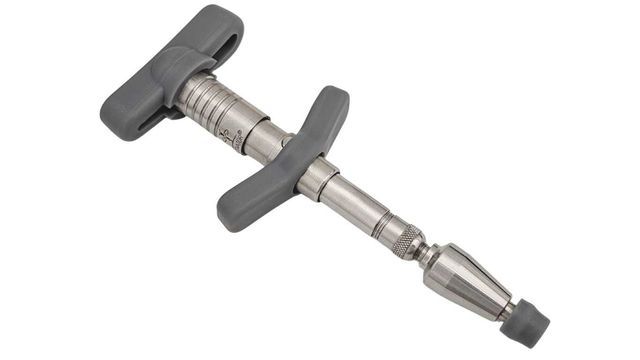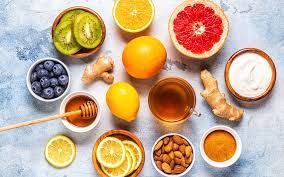The Activator: Small Tool, Big Results in Chiropractic Care

When most people picture a chiropractic adjustment, they imagine a manual adjustment—the quick, precise movement of a chiropractor’s hands creating that signature “pop.” But there’s another technique that’s just as effective, and in many cases, even more comfortable for patients: the Activator. This method uses a small handheld tool called the Activator Adjusting Instrument to deliver safe, gentle, and targeted adjustments. While it might look simple, this little spring-loaded device packs a powerful punch when it comes to improving spinal health and reducing pain.
In this post, we’ll break down what the Activator is, why chiropractors use it, how it works, and who can benefit most from this technique.
What Is the Activator?
The Activator is a small, handheld tool used by chiropractors to adjust the spine and other joints. It was developed in the late 1960s as an alternative to traditional manual adjusting techniques. The instrument itself is spring-loaded and designed to deliver a quick, controlled, and gentle thrust to a targeted area.
Instead of relying on a chiropractor’s hands to create the adjustment, the Activator provides a mechanical force. It’s incredibly precise, meaning the chiropractor can adjust only the intended vertebra or joint without affecting the surrounding tissues.
For patients who are nervous about manual adjustments or who dislike the “cracking” sound that sometimes comes with them, the Activator can be a comfortable and reassuring alternative.
Why Do Chiropractors Use the Activator?
Chiropractors use the Activator because it offers several distinct benefits compared to manual adjustments:
- Precision – The Activator delivers a controlled and localized thrust, targeting specific vertebrae or joints without involving neighboring areas. This makes it especially useful for sensitive regions.
- Speed – The instrument’s thrust is incredibly fast—so quick that the body’s muscles don’t have time to tense up in response. This allows for a smoother and more effective adjustment.
- Gentleness – Because it uses less force than manual adjustments, the Activator is ideal for patients who may not tolerate more vigorous manipulations.
- Consistency – While manual adjustments vary slightly depending on hand placement and force, the Activator delivers the same amount of pressure every time, ensuring consistency in care.
Ultimately, chiropractors use the Activator as another tool in their toolbox. It’s not about replacing manual adjustments—it’s about choosing the right method for the right patient at the right time.
How Does the Activator Work?
The science behind the Activator comes down to biomechanics and neurology. When a chiropractor uses the Activator on a joint or vertebra, the quick, low-force thrust stimulates the nervous system and helps restore normal motion in the joint.
Because the thrust is delivered so quickly, the surrounding muscles don’t contract or resist the movement, which can sometimes happen with manual adjustments. This makes the adjustment easier and more comfortable, particularly for patients with muscle tension, inflammation, or heightened sensitivity.
Research has shown that Activator adjustments can help improve mobility, reduce pain, and normalize joint function in much the same way as traditional chiropractic adjustments. For many patients, it’s the perfect balance of effectiveness and comfort.
Who Benefits from the Activator Method?
One of the best things about the Activator Method is its versatility. It can be used on patients of all ages, body types, and health conditions. Here are some of the groups who often benefit most:
- 1. Children : Kids may be nervous about chiropractic care, especially if they’ve heard about or experienced manual adjustments. The Activator is small, gentle, and less intimidating, making it ideal for children with spinal misalignments or posture issues.
- 2. Older Adults : For seniors with osteoporosis, arthritis, or fragile joints, manual adjustments may feel too forceful. The Activator provides a safe and effective way to restore motion without unnecessary stress on bones and joints.
- 3. Patients with Chronic Pain : Individuals with conditions like fibromyalgia or chronic low back pain may experience sensitivity to touch and pressure. Because the Activator is gentle and precise, it allows chiropractors to provide care without triggering additional discomfort.
- 4. Post-Surgical Patients : For those who have undergone spinal or joint surgery, manual adjustments may not always be advisable. The Activator allows for careful, targeted adjustments that respect the patient’s medical history and limitations.
- 5. Nervous or First-Time Patients : Not everyone is comfortable with the idea of hearing and feeling the “pop” of a manual adjustment. For these patients, the Activator offers a quieter, more subtle approach that still delivers results.
- 6. Athletes : Athletes who require precise, targeted care for specific joints often benefit from the Activator. It allows chiropractors to hone in on problem areas without stressing the rest of the body, which can speed up recovery.
Effectiveness of the Activator
Patients often ask: Is the Activator as effective as manual adjustments? The answer is yes. Multiple studies have shown that the Activator Method is just as effective as traditional manual techniques for addressing musculoskeletal pain, improving mobility, and enhancing overall function.
For chiropractors, the Activator provides another way to tailor care to each patient’s needs. Some patients respond better to manual adjustments, while others thrive with the Activator. Often, a combination of both methods may be used during a care plan.
What to Expect During an Activator Adjustment
If you’ve never experienced an Activator adjustment, here’s what you can expect:
- Assessment – Your chiropractor will assess your spine and joints to determine where adjustments are needed. This may involve palpation, leg-length checks, or mobility tests.
- Adjustment – Using the Activator, your chiropractor will deliver a gentle, quick thrust to the specific area. Patients often describe it as a light tap or click.
- Follow up – Most patients feel immediate relief, though some may experience gradual improvement over several visits as their body adapts.
The best part? There’s no twisting, cracking, or popping—just a small, targeted adjustment designed to restore balance and function.
Is the Activator Right for You?
Whether you’re nervous about traditional adjustments, dealing with a chronic condition, or simply curious about your options, the Activator Method is worth exploring. It’s safe, effective, and widely used by chiropractors around the world.
At our office here in Buffalo, NY, we believe in tailoring care to each patient’s needs. That’s why we offer a variety of techniques—including the Activator—to ensure you get the right treatment at the right time.
Final Thoughts
The Activator may be small, but it’s a game-changer in chiropractic care. By combining precision, gentleness, and effectiveness, it opens the door for patients who might otherwise hesitate to seek chiropractic treatment. Whether you’re young or old, an athlete or a desk worker, the Activator could be the tool that helps you move, feel, and live better.
If you’re interested in trying the Activator Method, schedule an appointment with one of our chiropractors today. We’ll walk you through the process, answer your questions, and help you decide if this technique is the right fit for your health goals.
Bethany Wolcott
D’Youville Chiropractic ‘26












